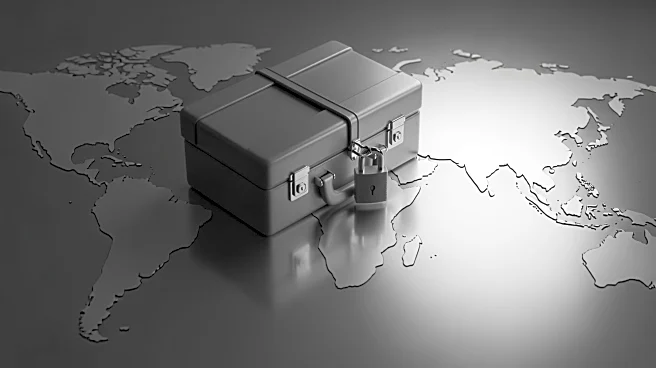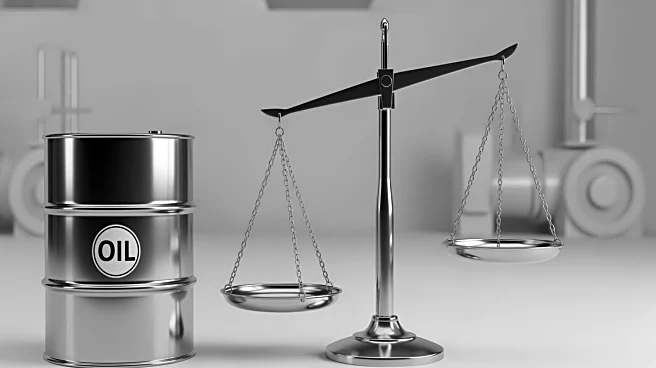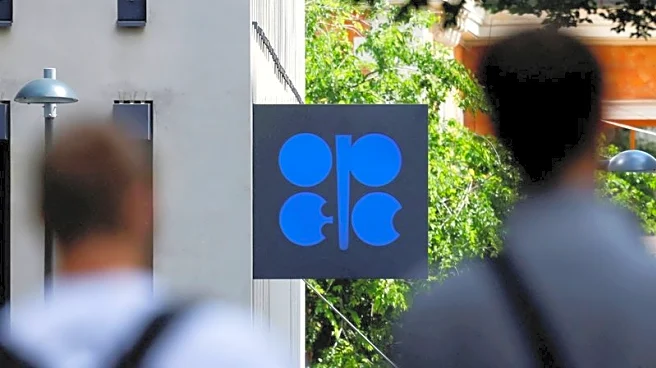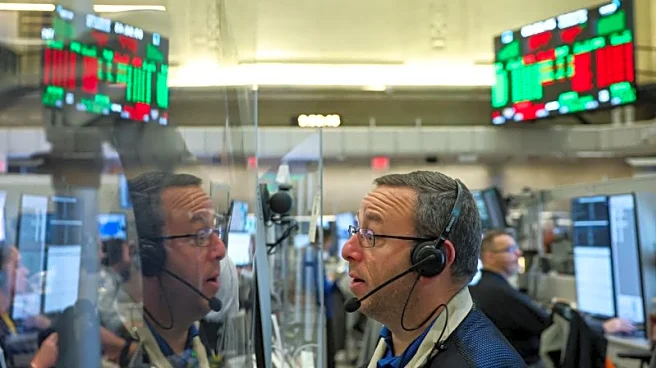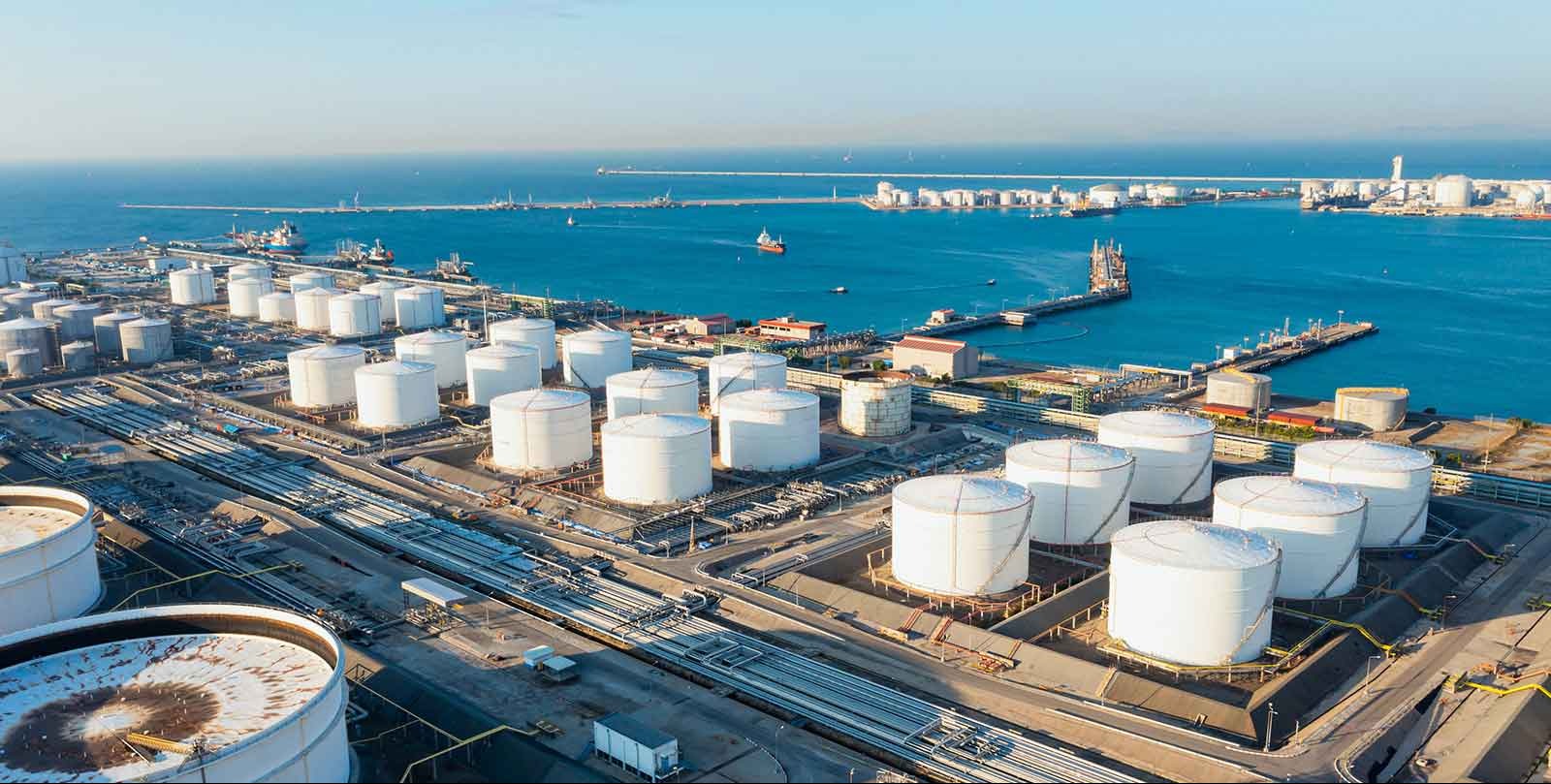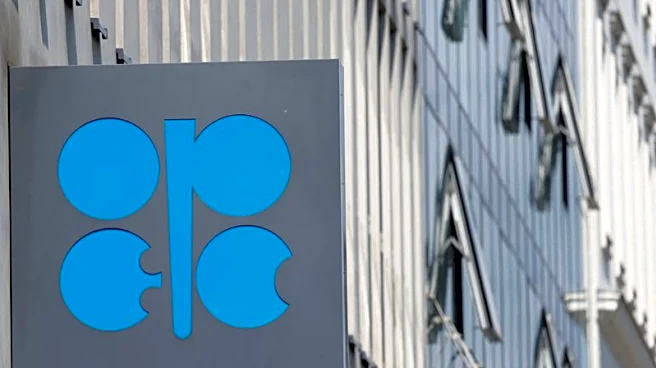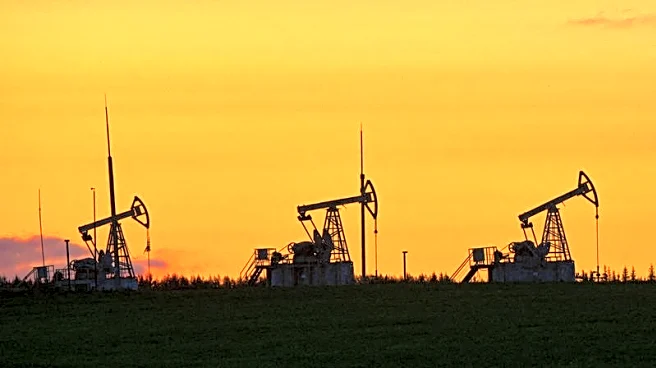What's Happening?
Oil prices have remained relatively stable following the announcement by the Organization of the Petroleum Exporting Countries and its allies (OPEC+) to pause output increases in the first quarter of next year. This decision comes after a small increase of 137,000
barrels per day was agreed upon for December. Despite the pause, the market is experiencing concerns over a potential oil supply glut, exacerbated by weak factory data from Asia, the world's largest oil-consuming region. The International Energy Agency has projected a global oil market surplus of up to 4 million barrels per day next year, while OPEC anticipates a balance between supply and demand. Additionally, geopolitical tensions, such as U.S. sanctions on Russian oil producers and recent attacks on Russian energy infrastructure, continue to influence market dynamics.
Why It's Important?
The decision by OPEC+ to halt output increases is significant as it reflects the group's ongoing influence over global oil prices and market stability. By managing production levels, OPEC+ aims to prevent a drastic drop in oil prices, which could have severe economic implications for oil-producing countries. The stability in oil prices is crucial for energy markets and can impact inflation rates, consumer prices, and economic growth globally. The geopolitical factors, including sanctions and regional conflicts, add layers of complexity to the oil market, affecting supply chains and energy security. Stakeholders in the energy sector, including governments and corporations, must navigate these challenges to ensure stable energy supplies and economic resilience.
What's Next?
As OPEC+ pauses its output increases, market participants will closely monitor the group's future decisions and their impact on oil prices. The geopolitical situation, particularly involving Russia, remains a critical factor that could influence future supply disruptions. Additionally, the response from major oil-consuming regions, such as Asia, will be pivotal in determining demand trends. Analysts and industry leaders will likely continue to assess the balance between supply and demand, adjusting strategies to mitigate risks associated with potential surpluses or shortages. The ongoing negotiations and policy decisions by OPEC+ will be crucial in shaping the global energy landscape in the coming months.




